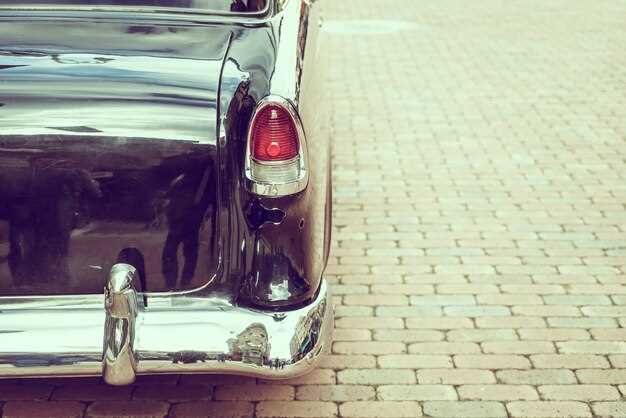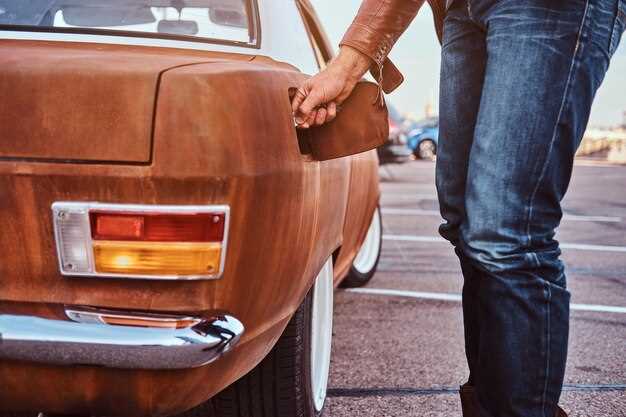
Experiencing the theft of a classic car can be a distressing event for any enthusiast. Classic cars often carry both sentimental value and significant financial investment, making their loss particularly painful. Understanding the proper steps to take immediately following a theft can greatly increase the chances of recovery and minimize potential losses.
In the unfortunate event that your classic car is stolen, it is crucial to act quickly. The first step should always be to report the theft to local law enforcement. Provide as much detail as possible, including vehicle identification numbers (VIN), license plate numbers, and photographs. Accurate information can expedite the recovery process and provide police with the data needed to initiate an investigation.
Additionally, notifying your insurance company is essential. Filing a claim promptly will help ensure that you are adequately compensated for your loss, assuming you have the appropriate coverage. Keeping detailed records of your vehicle’s value, modifications, and previous insurance communications can aid in the claims process.
As you navigate these initial steps, it’s also advisable to enlist the support of local classic car clubs or online communities. Fellow enthusiasts often share resources and can help spread the word, increasing the chances of recovering your stolen vehicle. Taking proactive measures can turn a devastating loss into a story of resilience and community support.
Immediate Actions to Report Your Stolen Classic Car
If you discover that your classic car has been stolen, it’s crucial to act swiftly to increase the chances of recovery. The following steps outline the immediate actions you should take:
1. Ensure Your Safety: Before anything else, verify your personal safety and that of others around you. If the theft occurred in a public place or involved confrontation, find a safe location first.
2. Gather Information: Collect all relevant details about your vehicle. This includes the make, model, year, color, Vehicle Identification Number (VIN), license plate number, and any unique features or modifications. Having this information at hand will make the reporting process easier.
3. Contact the Police: Report the theft to the local authorities immediately. Visit the nearest police station or call their non-emergency number to file a report. Provide them with the gathered details of your car. The police may give you a case number, which is essential for follow-up.
4. Inform Your Insurance Company: Notify your insurance provider about the theft as soon as possible. They will guide you through the claims process and may require specific documentation such as the police report and proof of ownership. Ensure you understand your policy coverage regarding theft.
5. Utilize Online Resources: Report your stolen car on online platforms and databases that specialize in stolen vehicle reports. Websites like the National Insurance Crime Bureau (NICB) allow you to check if your car has been reported and help circulate information to a broader audience.
6. Spread the Word: Inform friends, family, and fellow car enthusiasts about the theft. Utilize social media to post about your stolen vehicle. Share details and photos to increase visibility and reach a wider network of potential witnesses.
7. Check Surveillance Footage: If your car was stolen from a location with surveillance cameras, ask nearby businesses to review their footage. This may provide useful evidence and help identify the thief or the vehicle they used.
8. Keep Records: Document all communications with the police, insurance company, and any other relevant parties. Maintain a record of the case number, names of officers involved, and any follow-up actions taken.
9. Be Patient: Understand that recovering a stolen car may take time. Stay in contact with law enforcement and your insurance company for updates and continue to spread the word about your stolen vehicle.
Documenting Your Car’s Details for an Insurance Claim

When a classic car is stolen, having detailed documentation is crucial for filing an insurance claim. Begin by compiling the vehicle’s identification number (VIN), which uniquely identifies your car. This number is typically found on the dashboard or inside the driver’s side door. Keep a record of it in a secure location separate from the vehicle.
Next, gather comprehensive information about the car’s make, model, year, and color. Include any modifications or customizations that enhance its value, such as upgraded exhaust systems or interior redesigns. Photographic evidence is invaluable; take high-resolution pictures from various angles, capturing both the exterior and interior, along with any unique features or damages.
Document service records and receipts for maintenance, repairs, or parts replacements. This information helps establish the car’s history and condition prior to the theft. It’s also beneficial to keep receipts for any additional accessories, like sound systems or custom wheels, as these items may significantly contribute to the car’s worth.
In addition to physical documentation, consider creating a detailed description of your vehicle’s condition before the theft occurred. This narrative can include notes on mileage, any recent work done, and overall performance. Such thoroughness will assist the insurance adjuster in assessing the vehicle’s value accurately.
Lastly, stay organized. Create a dedicated file for all documentation related to your classic car, including insurance policies, photographs, and service records. This will streamline the claims process and ensure you have all necessary information readily available for your insurer.
Utilizing Social Media and Online Communities to Aid Recovery

When a classic car is stolen, reaching out to social media and online communities can significantly enhance the chances of recovery. These platforms allow for fast dissemination of information, enabling a broader audience to be alerted about the theft.
Share Detailed Information: Start by posting detailed information about your stolen vehicle. Include make, model, year, color, and any unique features or modifications. Clear photographs from various angles can help others recognize the car quickly.
Leverage Hashtags: Use relevant hashtags to expand the reach of your posts. Popular tags like #StolenCar, #ClassicCarTheft, and #CarRecovery can direct your content to individuals who are actively searching for stolen vehicles or who are passionate about classic cars.
Engage with Local and National Groups: Join online communities focused on classic cars or local car enthusiast groups. Post about your stolen vehicle and ask for help. Many members of these communities may have connections or information that can aid your search.
Contact Local Law Enforcement: While social media can be helpful, ensure that you also report your stolen vehicle to local law enforcement. Provide them with a copy of your social media posts as additional evidence of the theft.
Update Your Community: Keep your social media followers updated on any developments in the recovery process. Whether there are potential sightings or leads, continuous engagement can keep the search active and encourage others to remain vigilant.
Utilize Marketplace and Sale Platforms: Monitor online marketplaces where stolen cars might be listed for sale. Alerting members of online communities about your car’s theft can prompt them to report suspicious listings or activities.
Utilizing social media and online communities effectively requires a proactive approach. By harnessing the power of these platforms, you can significantly increase the visibility of your case and foster a supportive network that may lead to the recovery of your classic vehicle.
